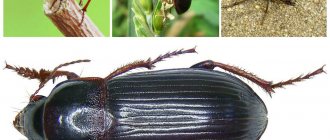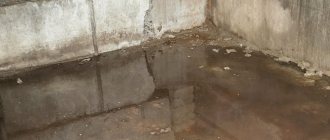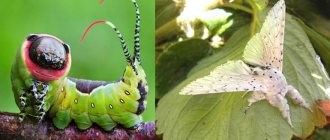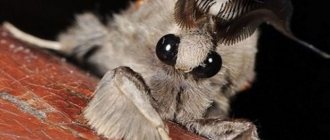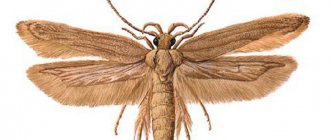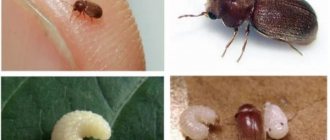Keeping at home
The insectarium must be decorated in such a way that it completely resembles a forest clearing.
Turf soil along with grass, fallen leaves, moss and sand are placed at its bottom. Various stones and shards are also placed here, which will serve as shelter for the insect. Earthworms, slugs, cockroaches are suitable as food - this is what the Crimean ground beetle feeds in natural conditions. The maintenance of larvae is not much different from the conditions for adult beetles. The main thing is that they are kept separate from them. Twice a day (morning and evening), the grass should be lightly sprayed with water to maintain the required humidity.
They put in a “ground beetle”
Grandmother’s words seem to echo back many years later, when the other day my mother Alexandra Vasilievna calls me and shouts into the phone: “They removed our chapter, put in a “ground beetle,” I.O.,” my mother pronounces these two letters with undisguised irritation. - This is our distant relative. No help. She asked to put the hay in the hay barn, but she refused. Weeds near roads are also not mowed. But they want to introduce new taxes on cows. Previously, people were strangled with taxes. And now - what, all over again?
I know the new acting head of the rural settlement, Lyudmila Sytin, 37 years old. As children, we sat on the bank of the village river Tikhaya, digging in the warm sand. Today, two weighty letters “I.O.” have grown from a little girl.
How? Lyudmila Sytina does not hide: “Vladimir Serafimovich called me (Kochuev, deputy head of the Verkhnedonsky district, on whose territory the rural settlement is located - TD). He said: “Come to Volkov. Need to talk". Volkov is the chairman of the cooperative, which owns all the land in the district. I went."
On this neutral territory, she was offered a new position. She agreed. When she returned to her work, she did not hide anything from her former boss: “They told me that the head is removing you and installing me.”
“I can’t mow the weeds, we only sometimes mow the places where the regional commission passes,” I.O. jabbers. Meshcheryakovsky rural settlement Lyudmila Sytina. “And I remember you,” she suddenly says to me, “you and I played together... No, well, your mother is a strange woman.” I explained to her several times that we would not cut weeds near the roads. So she ran up to the tractor driver and began to persuade him to cut the weeds. No. This will not work. This tractor driver was a big deal for us: to get a tractor with a mower, we applied several times and waited for him for six months. No, I can't cut the grass. We have a small budget,” you can hear the calculator knocking, “yes, small... And remember how we played with you... No, I can’t mow the grass on the farm. Don't let your mom ask. She is strange. We recently held a cleanup day, and your mother came up and asked me to help her remove the hay, and then throw it into the hayloft. And I need people here. And now. I won't help anyone with cows. Your cattle - you are the one to deal with. Let the mother mow and stack the hay herself.”
Reproduction
Most insects do not live longer than a year, but the Caucasian ground beetle is an exception. The lifespan of the species reaches up to 3 years, and under good conditions it can live up to 5 years. The Caucasian ground beetle has all stages of complete transformation: egg, larva, pupa and adult. The breeding season for these individuals begins in the spring, usually from April to May. The female lays 70 eggs in just one clutch.
Caucasian beetles are very picky in choosing the place where their larvae will develop. Choose damp and warm soil into which sunlight does not penetrate. Before laying her eggs, the female digs a small hole at least three centimeters deep. The period of metamorphosis of an egg into a larva takes two or more weeks. The formed larva is up to 2 centimeters in length. For the first few hours, the larvae of the Caucasian ground beetle are white in color, but then they begin to darken until they turn black. The larvae spend time in this role until the end of the summer season, and live and feed in the same way as their adult companions.
In order to obtain food, the Caucasian ground beetle larva has a well-developed jaw apparatus, which is present in adult individuals. The transformation into a cocoon occurs at the beginning of autumn, and it becomes a fully formed Caucasian beetle only with the arrival of spring.
Where does the ground beetle live?
Photo: Ground beetles in Russia
Ground beetles are insects that are distributed almost everywhere around the globe, except Antarctica. They can be found in Europe and Asia, Africa, Australia, North and South America, and in a variety of climate zones. There are species that can survive at sub-zero temperatures and species that are drought-resistant.
Since the species diversity of ground beetles is quite large, they can be found in the tropics and subtropics, in temperate climates, in the taiga and tundra. Their habitats are also very different: zones of forests and steppes, savannas and deserts, forest-steppes and semi-deserts, tropical rainforests and highlands.
For their life activities, ground beetles, as a rule, choose:
- top layers of soil (in fields, meadows and garden areas);
- bark of old trees and fallen leaves (in forests and parks);
- cracks, caves and crevices (in the mountains).
Among the many species of ground beetles, entomologists also distinguish many diurnal and nocturnal species, but with a small reservation. Its essence lies in the fact that the most determining criterion for activity for beetles is not the presence or absence of sunlight at one time or another of the day, but increased air humidity. After all, in the spring, when air humidity is high, nocturnal species tend to be active during the daytime.
Appearance
The graceful ground beetle has a body on which the head, chest and abdomen are oval in shape. The length of the beetle sometimes reaches 52 mm. This insect cannot fly - its wings are undeveloped, but its long legs allow it to run quite quickly. The front legs are adapted for cleaning the antennae due to the presence of a notch with dense hairs.
The Crimean ground beetle (photos of its representatives can be seen in the article) has several forms, differing in color, which can be blue, purple, green or black. The light on the surface of the coarse, wrinkled coatings is refracted, resulting in the illusion of the insect changing color. Experts call this feature optical coloring. The lower part of the ground beetle's body is black, with a shiny metallic tint.
Sexual demorphism is weakly expressed. Females are slightly larger, and males can be distinguished by their longer antennae and extended forelegs. The lifespan of these insects is 10-11 years.
Features of behavior
The Crimean ground beetle is a predator that most often leads a nocturnal lifestyle. Occasionally, it may appear during the day in search of food. Muscular long legs help hunt prey. With their help, the beetle also escapes from enemies. In one night, the insect can cover a distance of up to 2 km. At the same time, he has to maneuver to get to the most vulnerable spot of the victim. It is very difficult to catch a ground beetle - it is so evasive and fast.
When it is not possible to escape from the enemy with the help of its legs, it releases from its abdomen a stream of caustic brown liquid with an unpleasant, pungent odor. The formic acid contained in its composition causes severe pain and lacrimation if it gets into the eyes.
Lifestyle and interesting facts about the Crimean ground beetle
The Crimean ground beetle is endemic to the Crimean peninsula.
Insects of this species are both diurnal and nocturnal. They feed on animal organisms. The main delicacy for the Crimean ground beetle is the grape snail. But the diet also includes other shellfish.
To feast on the meat of a mollusk, the ground beetle does not break the shell, but simply “sucks out” the body of the mollusk. When the ground beetle is completely saturated, it can burrow into the ground and remain motionless for several days. The endurance of the insect and its method of hunting deserve special attention. Thanks to its strong legs, the ground beetle can run about two kilometers in a night in search of prey!
The ground beetle can have different shades: from blue to black, including purple and green.
If the insect senses danger, it can release a sharp, caustic substance. For people, getting this composition into the eyes can cause conjunctivitis. This advantage makes the ground beetle not a very pleasant prey for birds and animals, so larger predators try to avoid this beetle. This applies to foxes, raccoon dogs, badgers and some birds.
Most often, ground beetles can be found in parks and gardens, where they spend time burrowing into fallen leaves. Sometimes these insects simply crawl along the ground, going about their daily business.
The ground beetle has no enemies in nature, thanks to its defense mechanism.
Ground beetles are considered one of the most useful beetles for agriculture. They are capable of eating harmful insects, such as silkworms, which annually cause massive damage to farmland. For this purpose, people specially release ground beetles into the fields.
Enemies
Caucasian ground beetles are carnivorous predators; many species of ants and birds do not mind feasting on eggs, larvae and the beetles themselves. Many badgers and hedgehogs are a potential threat to this species. Caucasian beetles can become a snack for bears and wild pigs. However, the greatest pests for the development of the population are ants, which climb into the shelter of ground beetles and eat their larvae and eggs. Ants do not risk attacking adult individuals, since due to their small size they themselves will become a victim of the insect.
It is surprising that the Caucasian ground beetle feeds on many insect pests, so this representative has only a positive effect on the development of agricultural crops. However, many people do not realize this, so when they see this representative they try to immediately destroy it.
The population of the Caucasian ground beetle is under threat, and in order to prevent an even greater decline in the species, this species was included in the Red Book of Russia and Georgia.
Security measures
The number of this amazing insect is affected by the amount of precipitation, which is directly related to the food supply in the form of terrestrial mollusks. Cutting down vineyards leads to the disappearance of the grape snail, which is the main food of ground beetles. The reduction in numbers is also affected by the cultivation of forest clearings, the high sensitivity of this insect to pesticides, as well as uncontrolled fishing by collectors.
Today, the Crimean ground beetle is protected by law. In the Red Book it is listed as a rare, endangered species. In beetle habitats, there is a ban on the use of pesticides and the fishing of insects.
About pests
Some types of ground beetles are pests. Damaging cultivated plantings, they pose a serious threat to vegetable gardens and agricultural farms. Thus, the harmful group includes the bread ground beetle - a black resinous individual, the body length of which does not exceed 1.5 cm. Answering the question of what ground beetles of this species feed, we note that Their main delicacy is cereals.
Beetle larvae also cause no less harm when they feed on the milky juice of young grain. Wheat, rye and barley fields are especially affected by pests. They will not refuse corn and oats. Even leeks can replace the lack of cultural plantings.
Bread ground beetle
After mating, females lay eggs (there can be up to 250 of them in one clutch), which are white in color, smooth surface and oval in shape. After three weeks, larvae emerge from them. They live in the upper layer of soil and feed on the leaves of various cereal crops. In the winter season, the larvae go to live underground, most often on winter crops. By mid-spring they pupate, which takes about 20 days. After which they become sexually mature individuals.
Social structure and reproduction
Photo: Garden ground beetle
Reproduction in ground beetles begins at the age of 9-12 months.
Entomologists distinguish the following types of annual rhythm of ground beetles:
- the mating season occurs in the spring (the development of larvae occurs in the summer, and in the winter insects in the adult stage hibernate);
- the mating season occurs in summer or autumn (the larva overwinters, there is no summer hibernation);
- the mating season occurs in summer or autumn (the larva overwinters and there is summer hibernation);
- variable mating season (reproduction can occur at any time of the year; both larvae and adult beetles overwinter);
- The mating season and development takes more than a year.
Interesting fact: Some species of ground beetles living in the tropics and subtropics breed twice a year.
Ground beetles are insects with complete metamorphosis, that is, they pass through 4 stages in their development: egg, larva, pupa, imago. In the middle zone, the mating season for ground beetles begins at the end of April or beginning of May. After mating, the female lays a clutch at a depth of 3-5 cm. One clutch can consist of 20-80 eggs. The laying site should be dark, warm and humid. The soil should be rich in humus.
In species of ground beetles, which are characterized by caring for offspring, there are fewer eggs in the clutch and they are larger; in other species, the eggs are quite small, but there are many times more of them. The shape of the eggs can be in the form of an elongated oval or a cylinder rounded at the ends with a thin translucent yellowish or white shell, through which the larva can be seen by the end of incubation.
In most species of ground beetles, caring for offspring consists of choosing the most suitable place for laying eggs, but there are species in which it takes on more complex forms. For example, in Pterostichini ground beetles, the female guards the clutch until the larvae hatch, protecting it from attacks by other beetles and from infection by mold.
In Madagascan ground beetles Scartini, the female guards the eggs throughout the incubation period, and then lives with the larvae for some time, feeding them with caterpillars and earthworms. In Harpalini ground beetles, the female places a certain supply of plant seeds in the nesting chamber, which are then eaten by the hatched larvae.
The larvae of ground beetles have an elongated body (up to 2 cm in length) with a large head, large mouth, segmented abdomen, and short legs. They, as a rule, feed on the same things as adult beetles. During the growth process, the larvae molt three times. The pupae of ground beetles are naked, without a shell, and are very similar to adult individuals. They lie in a depression made in the soil; some species pupate in a cocoon. The pupal stage usually lasts 7–12 days.
Crimean ground beetle
Material from Wikipedia - the free encyclopedia
Go to: ,
| ?Crimean ground beetle | |
| Scientific classification | |
| Kingdom: | Animals |
| Type: | Arthropods |
| Class: | Insects |
| Squad: | Coleoptera |
| Family: | Ground beetles |
| Genus: | Ground beetles |
| Subgenus: | Procerus |
| View: | Crimean ground beetle |
Crimean ground beetle
(lat.
Carabus (Procerus) tauricus
) is a beetle from the ground beetle family. It is an endemic species of Crimea, previously considered a Crimean subspecies of Carabus scabrosus.
Description
Morphology
Body length up to 52 mm (specimen in the collection of S.A. Mosyakin). The color varies from blue, turning purple, to green or almost black. The underside is black with a metallic sheen. The elytra and pronotum are wrinkled and granular in structure. The Crimean ground beetle forms several forms, differing mainly in color.
Biology
Beetles are active at different times of the day. They run fast. A predator that feeds on terrestrial mollusks - mainly grape snails. When eating a snail, beetles do not chew the shell, but eat the mollusk by plunging the head and pronotum into the mouth of the shell. Well-fed beetles can burrow into the soil for several days. When in danger, an acrid brown liquid with a pungent odor is ejected from the end of the abdomen, which, if it gets into the eyes, can cause pain and quickly passing conjunctivitis.
What does it eat?
The Crimean ground beetle is a carnivorous insect that feeds on terrestrial mollusks. The predator's diet includes:
- slugs;
- caterpillars;
- small beetles, their eggs and larvae.
The beetle's favorite delicacy is the grape snail. To eat a mollusk, the predator does not damage its shell; it places its head in its cavity and digs its powerful jaws into the meat of the prey, “drinking” it. A satiated ground beetle buries itself in the ground, where it can lie for several days.
On a note!
Crimean ground beetles bring great benefits to agricultural lands, protecting them from harmful insects.
Reproduction
Mating and oviposition in the spring, usually in April. After fertilization, the female lays eggs in the ground to a depth of 30 mm in separate chambers. Egg stage 13-14 days. The length of the larva immediately after hatching is about 19 mm, width 6.5 mm. Weight - 162 mg. The hatched larva is white in color. After 10-12 hours, the larva acquires a purple-black color. 30-40 hours after hatching, the larva begins to feed on land mollusks. Pupation in the ground in a special chamber. The imago overwinters. The lifespan of adults is 2-3 years.
Green Way
The Crimean ground beetle is the largest, fastest and most dangerous beetle in Crimea. Its main danger is the huge fine for its destruction. So when taking photographs, do not pick up the ground beetle. And especially don’t push the beetle into a matchbox. Firstly, not every ground beetle will fit in there. Secondly, the ink beetle is a serious predator that is used to fighting for its territory and life - it can shoot a poisonous, caustic liquid . The ground beetle moves very quickly, briskly, busily and aggressively. Therefore, we recommend making a video, it turns out very impressive! Crimean ground beetle ( Ink beetle )
Ink beetle eats grape snail
Жужелица крымская Carabus tauricus Научная классификация Царство: Животные Тип: Членистоногие Класс: Насекомые Отряд: Жесткокрылые Семейство: Жужелицы Род: Жужелицы Вид: Жужелица крымская Латинское название Сarabus (Procerus) tauricus Bonelli, 1811 Жужелица крымская (лат. Carabus tauricus) — жук из семейства ground beetles It is an endemic species of Crimea , previously considered a Crimean subspecies of Carabus scabrosus. Morphology Body length up to 52 mm (specimen in the collection of S. A. Mosyakin). The color varies from blue, turning purple, to green or almost black. The underside is black with a metallic sheen. The elytra and pronotum are wrinkled and granular in structure. The Crimean ground beetle forms several forms, differing mainly in color.
Biology Beetles are active at different times of the day. They run fast. A predator that feeds on terrestrial mollusks - mainly grape snails. When eating a snail, beetles do not chew the shell, but eat the mollusk by plunging the head and pronotum into the mouth of the shell. Well-fed beetles can burrow into the soil for several days.
When in danger, a caustic brown liquid with a pungent odor is ejected from the end of the abdomen, which, if it gets into the eyes, can cause pain and quickly passing conjunctivitis.
Habitat Beetles are found on the soil surface, often in fallen leaves, mainly in deciduous, less often mixed mountain forests, as well as in gardens and parks.
Distribution Lives in western and southwestern Crimea, also inhabits the entire mountain zone with foothills, absent in the east of the peninsula.
Reproduction Mating and egg-laying in spring, usually in April.
After fertilization, the female lays eggs in the ground to a depth of 30 mm in separate chambers. The egg stage is 13-14 days. The length of the larva immediately after hatching is about 19 mm, width 6.5 mm. Weight - 162 mg. The hatched larva is white in color. After 10-12 hours, the larva acquires a purple-black color. 30-40 hours after hatching, the larva begins to feed on land mollusks. Pupation in the ground in a special chamber. The imago overwinters. The lifespan of adults is 2-3 years.
Number Number is subject to fluctuations and is partly directly related to the amount of precipitation and, accordingly, the amount of food supply in the form of terrestrial mollusks. In “wet years” the number of grape snails increases, and the population of the Crimean ground beetle increases proportionally.
The number is declining due to a decrease in virgin areas, cultivation of forest clearings, the use of pesticides, and uncontrolled fishing by collectors and vacationers.
Notes on protection The species was included in the Red Book of the Ukrainian SSR (III category), and included in the European Red List. Protected in the reserves of Crimea.
Conservation measures : Prohibition of the use of pesticides in habitats, prohibition of catching beetles.
Security Notes
The species is listed in the Red Book of Ukraine (category III), and is included in the European Red List. It is protected in the reserves of Crimea. Conservation measures: Prohibition of the use of pesticides in habitats, prohibition of catching beetles.
Nutrition
Like most representatives of this family, the Crimean ground beetle has extraintestinal digestion. Holding its prey with its powerful jaws, the beetle practically sucks it in. The midgut secretions poured onto the victim help soften even the toughest tissues. Strong jaws easily destroy any chitinous cover.
The basis of the diet of ground beetles are caterpillars, slugs, snails, other beetles, and insect eggs. The predator can lie in wait for its prey in ambush or catch up with the help of long muscular legs. When eating a snail, the beetle leaves its house intact, gnawing only the mollusk itself. Having had enough, the Crimean ground beetle burrows into the soil for several days.
